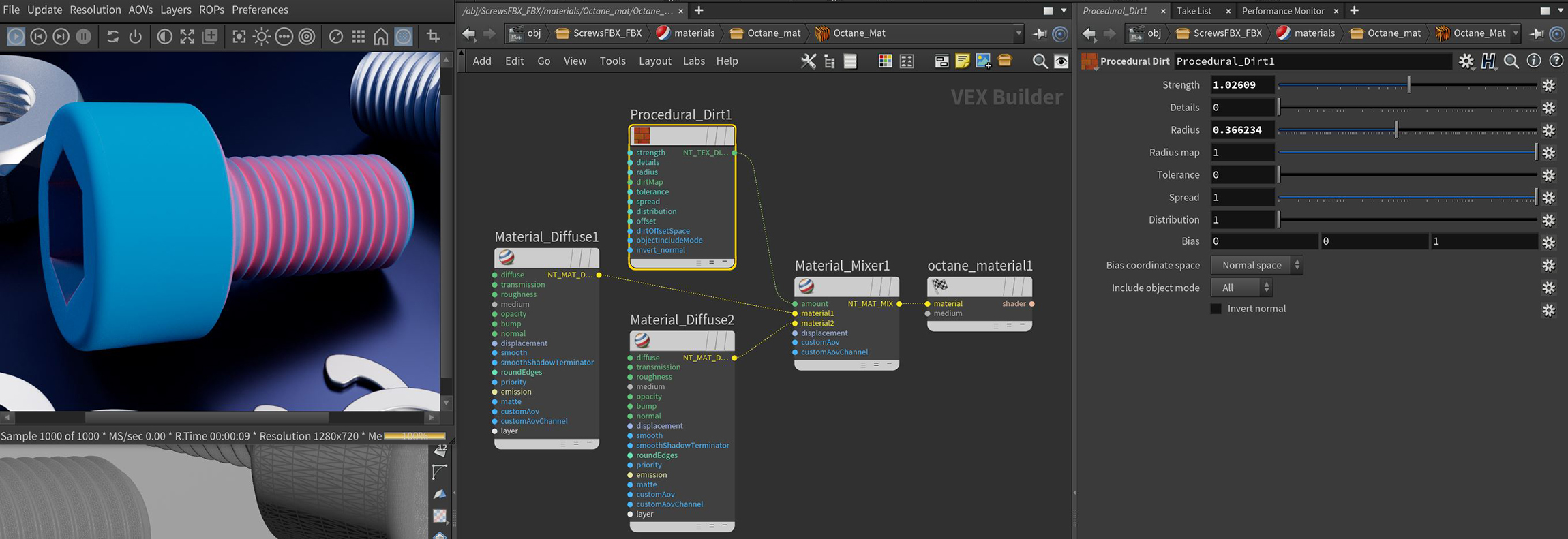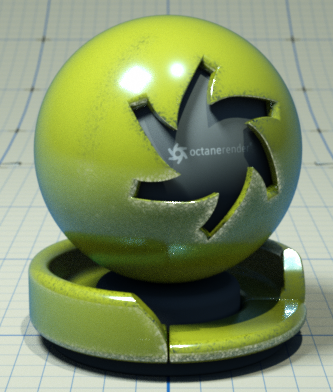
The Dirt node can create different effects based on ambient occlusion calculations (figure 1). This texture always returns a random value and can simulate dirt, dust, or wear-and-tear. The Dirt procedural is often plugged into the DiffuseAmount of diffusion, or the reflection of light photons at different angles from an uneven or granular surface. Used for dull, non-reflecting materials or mesh emitters. parameter, the Bump parameter, or the TransmissionA surface characteristic that determines if light may pass through a surface volume. parameter.

Figure 1: The Dirt texture node applied to a scene object
Strength - This is the lightness (from 0.1-10) of the overlaying material spread across the map.
Detail - The density (from 1-100) of the overlaying material.
Radius - The relative size of the map set against the surface that's visible to you. A value of 100 results in almost complete coverage by the overlaying material.
Radius Map - Determines the proportion of the maximum area affected by the dirt effect.
Tolerance - This setting can avoid black edges on rough tesselated meshes.
Spread - Controls the ray direction with respect to the normal of the surface. A value of 0 means the dirt direction is shot straight in the direction of the surface normal, and a value of 1 means the dirt rays are shot in all directions in the upper hemisphere in a cosine lobe.
Distribution - Controls how evenly the rays are shot within the sampling cone. When the value is 100, rays gather closer to the lateral surface. If the value is 1, the rays are evenly distributed.
Bias - The shading normal vector in shading space that is sampled with a custom direction. By default, the direction is (0,0,1), which is the shading normal in shading coordinates. If any non-zero bias is set, then this bias vector is used as the shading normal to sample dirt rays.
Bias Coordinate Space - The coordinate space for the bias vector.
Include Object Mode - Includes objects when calculating dirt value. By default, the selected mode is All, which includes all object intersections for calculating dirt. If Self is selected, only self-intersection is taking into account. If Others is selected, only ray-intersection with other objects is taken into account.
Invert Normal - Inverts the normal and overlaying material.

Figure 2: The Dirt node mixed with two GlossyThe measure of how well light is reflected from a surface in the specular direction, the amount and way in which the light is spread around the specular direction, and the change in specular reflection as the specular angle changes. Used for shiny materials such as plastics or metals. materials